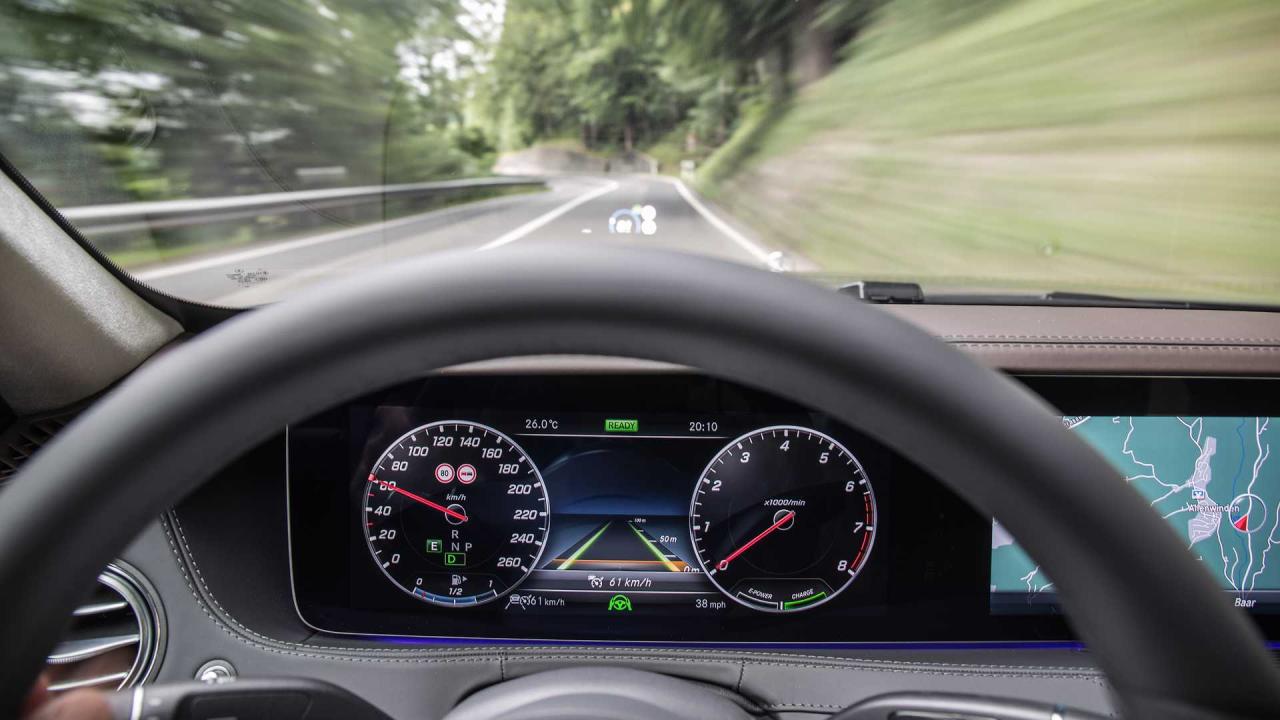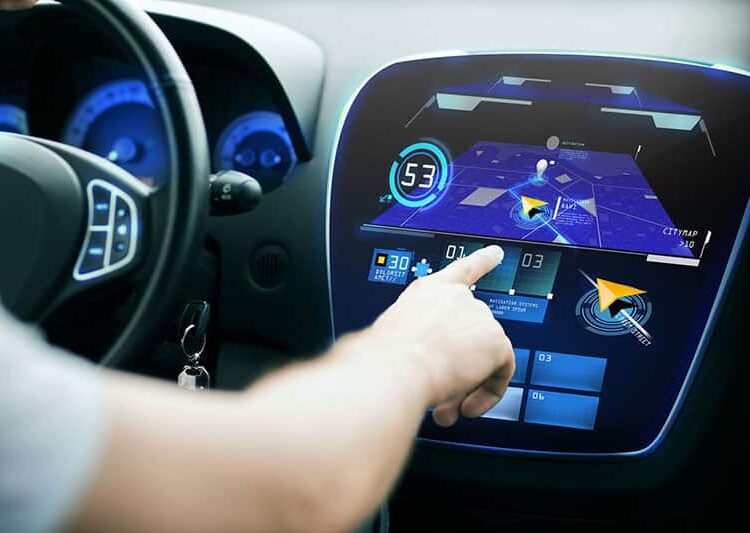In the ceaseless pursuit of a safer world, the automotive industry has emerged as a powerhouse of innovation, with a new generation of vehicle safety technologies fundamentally transforming the driving experience. The goal is no longer just to protect occupants in a crash, but to prevent the crash from happening in the first place. These newest tech for cars are intelligent, proactive, and interconnected systems that act as an extra pair of eyes, a second set of hands, and a vigilant protector, making our roads safer for drivers, passengers, and pedestrians alike. Understanding the diverse range of these advancements, their core functionalities, and their profound impact on the future of mobility is crucial for every driver, car buyer, and anyone invested in a future of zero road fatalities.
A Shift from Protection to Prevention

For decades, automotive safety was a reactive science. The focus was on building cars that could withstand a crash, with innovations like seatbelts, airbags, and reinforced chassis absorbing and dispersing impact. Today, the focus has shifted to a proactive paradigm, with technology working to mitigate and prevent collisions through an array of sophisticated sensors, cameras, and software.
A. The Evolution of Automotive Safety
The journey of car safety has been one of continuous innovation, driven by a blend of engineering excellence, technological breakthroughs, and a societal commitment to reducing road fatalities.
- Reactive Era: The first era of safety was defined by reactive systems—seatbelts (1950s), airbags (1970s), and anti-lock braking systems (ABS) (1970s). These were designed to minimize injury in the event of a crash.
- Passive Safety: The next era focused on passive safety, with innovations like crumple zones, side-impact beams, and reinforced safety cages. These were designed to absorb and dissipate the energy of a crash.
- Active Safety: The active safety era, which began in the late 1990s, was the first to focus on accident prevention. Innovations like electronic stability control (ESC) and traction control systems used sensors to help drivers maintain control of the vehicle in difficult situations.
- Advanced Driver-Assistance Systems (ADAS): The current era is defined by ADAS, a suite of intelligent systems that use sensors, cameras, and software to assist the driver and prevent accidents. These are the building blocks of the self-driving car.
- AI and Machine Learning: The future of vehicle safety will be shaped by Artificial Intelligence and Machine Learning. AI is being used to analyze real-time data from a car’s sensors, identify potential threats, and make split-second decisions that a human driver could not.
B. The Pervasive Role of Safety Technology in Modern Vehicles
Today, safety technology is no longer a luxury option. It is an indispensable part of a modern vehicle, providing a new level of security and peace of mind for drivers.
- Real-Time Threat Detection: A car’s sensors and cameras are constantly scanning the environment for potential threats—pedestrians, cyclists, other cars—and can provide a real-time alert to the driver.
- Human Error Mitigation: The vast majority of accidents are caused by human error—distracted driving, drowsy driving, or simple inattention. Safety technology acts as a vigilant protector, mitigating these errors and providing a new layer of security.
- A New Layer of Security: A car’s safety systems are not a replacement for a driver’s attention, but they are a new layer of security that leverages the power of technology to enhance a driver’s safety and security.
- Shared Responsibility: The future of vehicle safety will be defined by a shared responsibility between the driver and the car. The car’s systems will work in concert with the driver to prevent accidents, creating a new, safer driving experience.
Diverse Gadgets for Safety Tech Needs
The range of vehicle safety technologies available today is vast, with options for every need, from a simple driver-assist feature to a full suite of automated systems.
A. The Crash Prevention Toolkit
These systems are designed to actively assist the driver and prevent a collision from happening in the first place.
- Automatic Emergency Braking (AEB):A. Sensor and Camera-Based: AEB systems use a combination of radar, lidar, and cameras to scan the road ahead for a potential collision with another vehicle, a pedestrian, or a cyclist.B. Proactive Braking: If the system detects an impending collision and the driver does not respond in time, it will automatically apply the brakes, either to prevent the crash or to reduce its severity.
C. Pedestrian Detection: Many modern AEB systems also have a pedestrian detection feature that can detect a person walking in front of the car and automatically apply the brakes.
- Blind Spot Monitoring (BSM):A. Sensor-Based Alerts: BSM systems use sensors in the car’s rear bumper to detect another vehicle in your blind spot.B. Visual and Auditory Alerts: A visual alert (e.g., a light in your side-view mirror) and an auditory alert will be triggered if you try to change lanes while a vehicle is in your blind spot, which is a major cause of highway accidents.
- Lane-Keeping Assist (LKA):A. Camera and Sensor-Based: LKA systems use a forward-facing camera to monitor the lane markings on the road.B. Steering and Braking: If the system detects that you are drifting out of your lane without using a turn signal, it will provide a gentle steering correction or apply a light brake to guide you back into your lane.
C. Road Departure Warning: A similar system, called Road Departure Warning, will provide a more forceful alert and a steering correction if the car is about to veer off the road.
- Rear Cross-Traffic Alert (RCTA):A. Sensor-Based Alerts: RCTA systems use sensors in the car’s rear bumper to detect a vehicle or a person approaching from the side when you are backing out of a parking spot.B. Visual and Auditory Alerts: A visual and an auditory alert will be triggered if the system detects an approaching vehicle, which is a great feature for a crowded parking lot.
B. The Driver Monitoring Toolkit
These systems are designed to monitor the driver for signs of distraction or drowsiness and to provide a real-time alert.
- Driver Attention Monitoring:A. Camera-Based: A camera, often mounted on the steering column, monitors the driver’s face for signs of distraction or drowsiness.B. Alerts: If the system detects that the driver’s eyes are not on the road or that they are showing signs of drowsiness, it will provide a visual and an auditory alert.
C. Driver Behavior Monitoring: Some systems also monitor the driver’s steering and braking patterns for signs of erratic or drowsy driving.
- Drowsiness Detection:A. Biometric and Sensor-Based: Some advanced systems use a combination of biometric sensors and cameras to monitor the driver’s heart rate, eye movements, and brain activity for signs of drowsiness.B. Proactive Alerts: If the system detects that the driver is drowsy, it will provide a proactive alert, suggesting that they pull over and take a rest.
- Rear-Seat Reminder:A. Sensor-Based Alerts: A sensor in the car’s rear seat detects when a passenger, a child, or a pet has been left in the back seat.B. Visual and Auditory Alerts: When the driver turns off the car, the system will provide a visual and an auditory alert to remind them to check the back seat, which is a crucial feature for preventing heatstroke.
C. The Post-Crash Toolkit
These systems are designed to provide a crucial lifeline in the event of a crash or an emergency.
- Automatic Crash Notification (ACN):A. Sensor-Based: ACN systems use a combination of sensors to detect a crash.B. Automatic Call: If the system detects a crash, it will automatically make a call to a professional monitoring service or to a pre-selected contact, providing them with your real-time location and a live audio feed.
C. GPS Tracking: The system also has a GPS tracker that can provide your real-time location to emergency services.
- Emergency SOS:A. Manual SOS: Many modern cars also have a manual SOS button that can be pressed to send an emergency alert to a professional monitoring service or a pre-selected contact.B. GPS Tracking: The system also has a GPS tracker that can provide your real-time location to emergency services.
- In-Car Camera Systems:A. Accident Recording: A built-in camera system, or a third-party dash cam, can record the events leading up to and during a crash. This can be invaluable for insurance claims and for legal purposes.B. 360-Degree View: Some advanced systems also have a 360-degree view that can be used to document the scene of a crash.
The Profound Impact

The integration of advanced safety technologies into our vehicles is not just about a better driving experience; it’s about a fundamental transformation of our roads, our communities, and our approach to safety.
A. A Significant Reduction in Road Fatalities and Injuries
The most direct and visible impact is a significant reduction in road fatalities and injuries.
- Preventing Accidents: ADAS systems like AEB, BSM, and LKA are proving to be highly effective at preventing accidents, which is the ultimate goal of automotive safety.
- Mitigating Severity: In the event of a crash, safety systems like airbags and reinforced chassis are mitigating the severity of injuries, saving lives and reducing the cost of healthcare.
- Protecting Vulnerable Road Users: The integration of pedestrian and cyclist detection systems is a crucial step in protecting the most vulnerable road users.
- Saving Lives: The integration of ACN and emergency SOS systems is a crucial step in saving lives, as a quick response from emergency services can be the difference between life and death.
B. A New Era of Driving and Mobility
The integration of advanced safety technologies is a key building block of the self-driving car, which is poised to revolutionize mobility.
- Autonomous Driving: The ADAS systems in modern cars are the building blocks of the self-driving car. As these systems become more sophisticated, cars will be able to drive themselves, which could reduce human error and make our roads even safer.
- Mobility as a Service: The self-driving car will be a key component of a new “Mobility as a Service” model, where people can subscribe to a service that provides them with a car on demand.
- Urban Planning: The self-driving car will have a profound impact on urban planning, with cities redesigning their streets and public spaces to accommodate a new era of mobility.
C. A More Resilient Automotive Industry
The automotive industry’s commitment to safety is a powerful testament to its resilience and its capacity for innovation.
- Competitive Advantage: Car manufacturers that are at the forefront of safety technology are gaining a significant competitive advantage. Consumers are increasingly making their purchasing decisions based on a car’s safety features.
- Innovation: The push for safer cars is a powerful engine of innovation, driving advancements in sensor technology, AI, and software.
- Reputation: A car manufacturer’s reputation for safety is one of its most valuable assets. The integration of advanced safety technologies is a crucial step in building and maintaining that reputation.
Conclusion
The integration of newest tech for cars is a story of a transportation technology that is fundamentally transforming our world. The proactive safety paradigm is no longer a futuristic vision; it is a current reality, with a sophisticated arsenal of sensors, cameras, and software working in concert with the driver to prevent accidents and save lives.
While the challenges of cost, user adoption, and regulatory complexity are significant, the benefits are profound and enduring. A significant reduction in road fatalities and injuries, a new era of driving and mobility, and a more resilient automotive industry are all on the horizon. The future of automotive safety is not about building stronger cars; it’s about building smarter cars. The path to a safer future is being paved with technology, and every new innovation is a testament to our commitment to a world of zero road fatalities.













